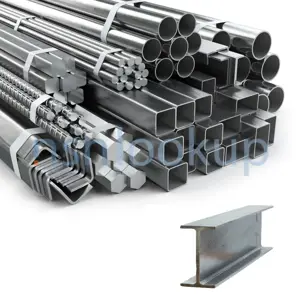Structural Angle
Item Name Code (INC) 37017
 |
A structural shape fabricated from a ferrous or nonferrous material and resembling the letter L in cross-sectional form. The edges may have a bulb, be rounded, and the inside corner may have a fillet.
 Additional Information for Structural Angle
Additional Information for Structural Angle
Structural angles, also known as angle irons or L-shaped beams, are a type of structural steel shape commonly used in construction and engineering projects. They have two legs of equal length that are joined together at a 90-degree angle, forming the shape of an "L".
Structural angles are versatile and can be used in various applications, such as:
1. Structural support: They are often used as load-bearing members in buildings, bridges, and other structures. The 90-degree angle provides stability and strength, making them suitable for supporting heavy loads.
2. Framing: Structural angles are commonly used in framing applications, such as framing walls, roofs, and floors. They can be used as studs, joists, or rafters to provide structural support and stability.
3. Bracing: Structural angles are also used for bracing and reinforcing structures. They can be used to add strength and rigidity to beams, columns, and other structural members.
4. Shelving and storage: The L-shaped design of structural angles makes them ideal for creating shelving units and storage racks. They can be easily bolted or welded together to create sturdy and adjustable storage solutions.
Structural angles are typically made from hot-rolled steel or cold-formed steel, and they come in various sizes and thicknesses to suit different applications. They are often specified by their dimensions, such as the length of each leg and the thickness of the material.
When using structural angles in construction or engineering projects, it is important to follow industry standards and guidelines to ensure proper installation and structural integrity.